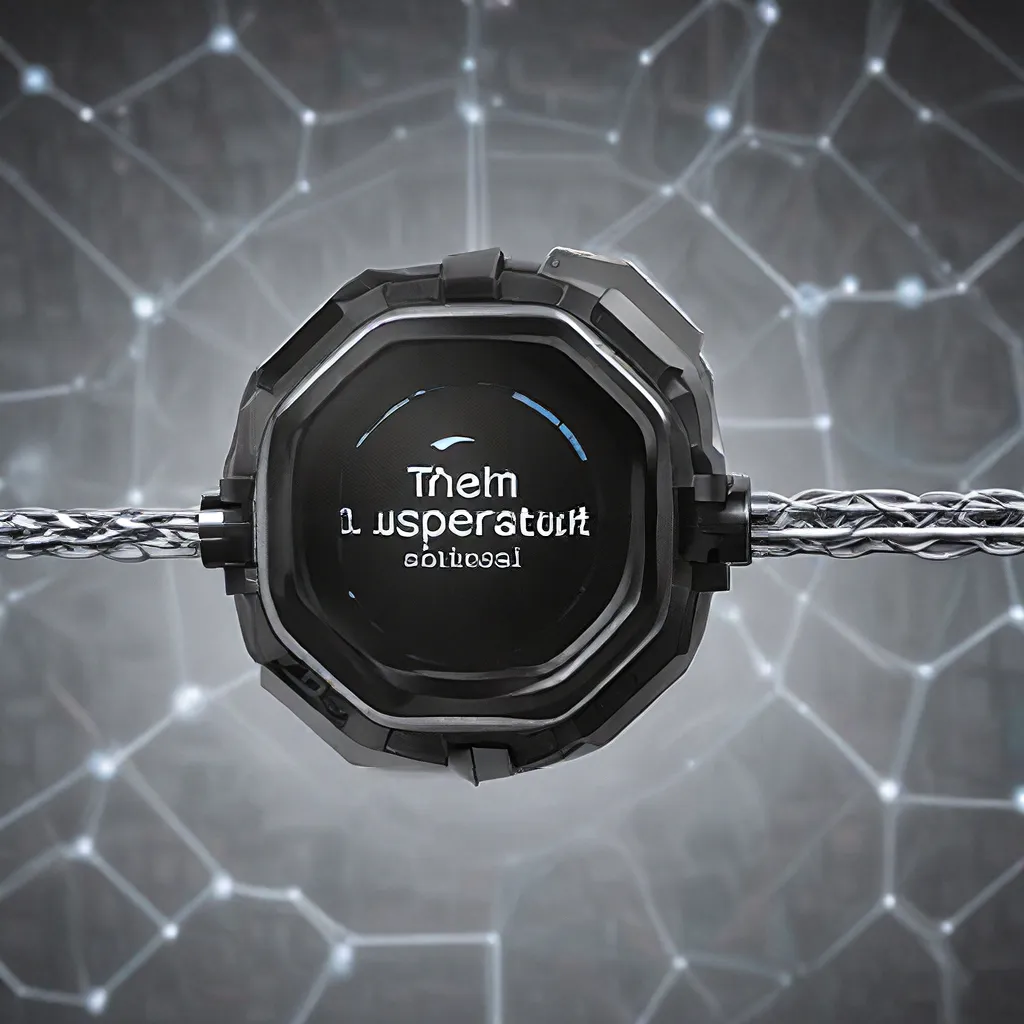
Unlocking the Potential of Sensor Networks in the IoT Era
In the rapidly evolving world of the Internet of Things (IoT), sensor networks have emerged as a critical component, enabling the seamless integration of physical devices with digital systems. These sensor networks are responsible for collecting, processing, and transmitting vast amounts of data, powering a wide range of applications, from smart cities and industrial automation to environmental monitoring and healthcare. As the adoption of IoT technologies continues to accelerate, the need for robust and secure sensor network design has become paramount.
One of the key challenges in this domain is ensuring the security and authentication of sensor devices at the IoT edge. Sensor devices, often deployed in remote or public environments, are susceptible to various security threats, including unauthorized access, data manipulation, and denial-of-service attacks. Traditional authentication methods, such as centralized identity management systems, may not be sufficient to address the unique requirements and constraints of sensor networks in the IoT landscape.
Emerging research has highlighted the potential of blockchain technology as a promising solution to address these security concerns in sensor network design. Blockchain, with its decentralized, transparent, and immutable nature, offers a novel approach to authenticating sensor devices and securing the IoT edge.
Blockchain-Based Authentication for Sensor Devices
The integration of blockchain technology with sensor networks can provide a robust and scalable solution for device authentication and data integrity. By leveraging the distributed ledger capabilities of blockchain, sensor devices can establish secure identities and verify the authenticity of data exchanges, even in the absence of a centralized authority.
One of the key benefits of this approach is the decentralized nature of the authentication process. Instead of relying on a single point of failure, such as a centralized server, the blockchain network distributes the authentication responsibilities across multiple nodes. This ensures that even if one or more nodes are compromised, the overall system remains secure and operational.
Furthermore, the immutable nature of the blockchain provides a tamper-resistant record of all device interactions and data exchanges. Any attempts to manipulate sensor data or impersonate authorized devices can be easily detected and prevented, enhancing the overall security and data integrity of the sensor network.
Enhancing IoT Edge Security with Blockchain
To implement a blockchain-based authentication system for sensor networks, several critical components must be considered:
-
Blockchain Network Architecture: The choice of blockchain platform, consensus mechanisms, and network topology can have a significant impact on the performance, scalability, and security of the sensor network. Permissioned blockchain networks, where access is controlled and verified, may be more suitable for IoT applications, as they provide better scalability and transaction throughput compared to public blockchain networks.
-
Sensor Device Integration: Sensor devices must be equipped with the necessary hardware and software capabilities to participate in the blockchain network. This may involve integrating lightweight cryptographic algorithms, secure storage for private keys, and communication protocols that align with the blockchain network’s requirements.
-
Edge Computing and Data Processing: The IoT edge, where sensor devices are deployed, plays a crucial role in data processing and decision-making. By leveraging edge computing, sensor data can be preprocessed and filtered before being transmitted to the blockchain network, reducing the overall network load and improving response times.
-
Energy Efficiency and Power Management: Sensor devices often have limited power resources, and the blockchain-based authentication process must be designed to minimize energy consumption. Techniques such as optimized consensus mechanisms, duty-cycling, and energy-efficient cryptographic algorithms can help address this challenge and ensure the longevity of sensor network deployments.
-
Scalability and Interoperability: As the number of sensor devices and IoT applications continues to grow, the authentication system must be scalable and able to handle the increasing volume of transactions. Additionally, interoperability between different blockchain platforms and sensor network protocols is essential to enable seamless integration and data exchange across diverse IoT ecosystems.
Unlocking the Full Potential of Sensor Networks
By integrating blockchain-based authentication into sensor network design, IoT practitioners can unlock a wide range of benefits:
-
Secure Device Identification: Blockchain-based authentication ensures that only authorized sensor devices can join the network and participate in data exchanges, mitigating the risk of unauthorized access and device impersonation.
-
Tamper-Proof Data Integrity: The immutable nature of the blockchain guarantees the integrity of sensor data, preventing unauthorized modifications and ensuring the trustworthiness of the information collected.
-
Distributed Trust and Resilience: The decentralized architecture of the blockchain network eliminates single points of failure, making the sensor network more resilient to attacks and disruptions.
-
Enhanced Privacy and Compliance: Blockchain-based authentication can improve data privacy by enabling fine-grained access control and data provenance tracking, which is crucial for meeting regulatory requirements in various industries.
-
Improved Efficiency and Cost Savings: By automating the authentication process and reducing the need for centralized management, blockchain-based sensor networks can optimize operational efficiency and lower long-term maintenance costs.
As the Internet of Things continues to transform industries and our daily lives, the importance of securing the IoT edge cannot be overstated. By leveraging blockchain technology to enhance the authentication and security of sensor networks, IoT practitioners can pave the way for more reliable, trustworthy, and scalable sensor-driven applications that unlock the full potential of the connected world.
Sensor Networks is at the forefront of this evolving landscape, providing cutting-edge research, technological advancements, and practical insights to help organizations and individuals navigate the complexities of sensor network design and IoT security. Explore our comprehensive resources and stay ahead of the curve in this dynamic and rapidly growing field.